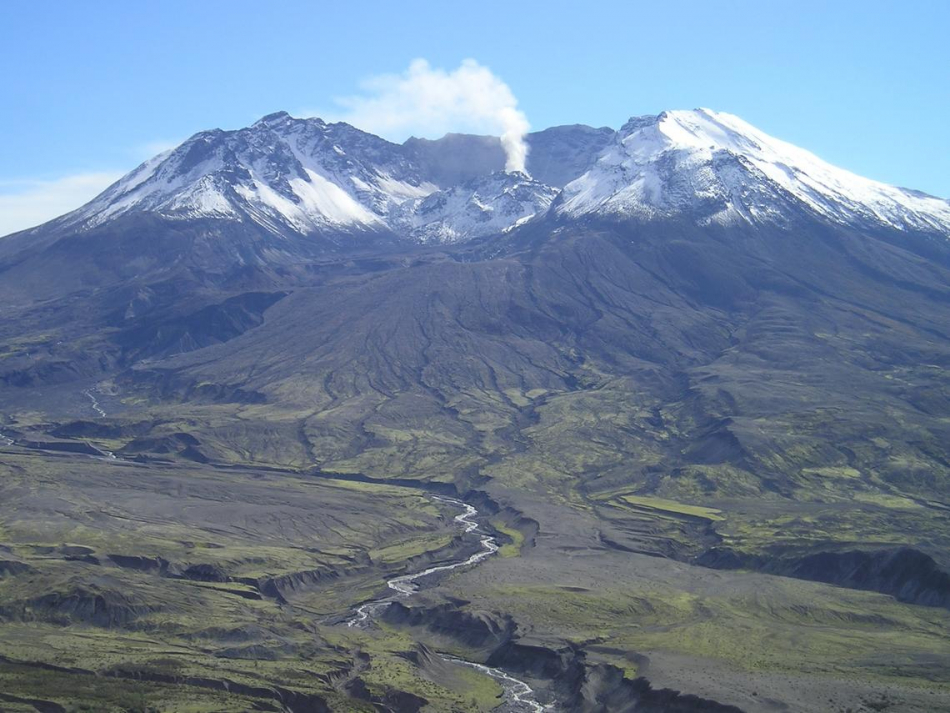The establishment of the Monument protects and preserves the landscape around the volcano, allowing for study of the system response to this major perturbation. Like Iceland’s volcanic WorldHeritage Site, Surtsey, the landscape became a new gift to ecological systems science as research began on understanding the response to a massive environmental perturbation. This landscape is revered by researchers and loved by many who visit both in person and virtually. Spirit Lake is a centrepiece of the national monument, a talisman of the landscape changes wrought by the 1980eruption, and managing its outflow is an ongoing maintenance and safety concern who’s engineering design and retrofit must be addressed in this dynamic and intensively studied area. Any major federal action conducted in this context draws focused attention and critical scrutiny.
The 1980 eruption destroyed the summit of the volcano, sending large amounts of debris into the North Fork Toutle River and blocking the sole means of drainage from Spirit Lake. Rising lake levels could cause failure of the debris blockage, putting the downstream population of approximately 50,000 at risk of catastrophic flooding and mud flows.Furthermore, continued transport of sediment to the river from volcanic debris deposits surrounding the mountain reduces the flood carrying capacity of downstream river channels and leaves the population vulnerable to chronic flooding. Engineering measures were implemented in the 1980s to manage both catastrophic and chronic risks associated with the debris blockage and sediment loads in the rivers. These included construction of a 1.56-mile tunnel atSpirit Lake to drain the lake and control lake levels. Engineering measures now in place, however, do not represent long term solutions to the region’s risk management challenges.Because the Spirit Lake outflow tunnel serves as the only drainage for SpiritLake, disruption of tunnel operations leaves the debris blockage vulnerable to breaching. The tunnel has required major repairs and is not operating optimally. Additional expensive repairs are necessary, and, as for any constructed facility, continued costly maintenance will be needed.
Catalyst has been retained by the US ForestService, Gifford Pinchot National Forest, to conduct outreach and multi-criteria decision making for the Spirit Lake Outflow Safety ImprovementProject. The outcome will lead to decisions for the optimum long-term engineering solutions to be installed and support the National EnvironmentalPolicy Act process. Catalyst is also managing an engineering evaluation of safety improvement solutions will be conducted. This work will provide content for the enhanced outreach program and support the NEPA review of alternatives. This effort, while central to the overall goals of the Safety Improvement Project.
[1] Casadevall, T. J., Tormey, D., and Roberts, J. (2019). World Heritage Volcanoes: Classification, gap analysis, and recommendations for future listings. Gland, Switzerland: IUCN. viii +68pp.
[2] Establishing a Mount St. Helens NationalVolcanic Monument in the State of Washington, S. Rep. No. 97-481, 9 (1982)

